1982 Corvette Fuel System
Article by Mark Trotta
By today's standards, the Crossfire injection system is downright simple, but when new, it baffled many owners and technicians alike. Diagnosis of a Chevy Crossfire system should start at the fuel pump. It is a low-pressure, high-volume electric pump mounted inside the gas tank.
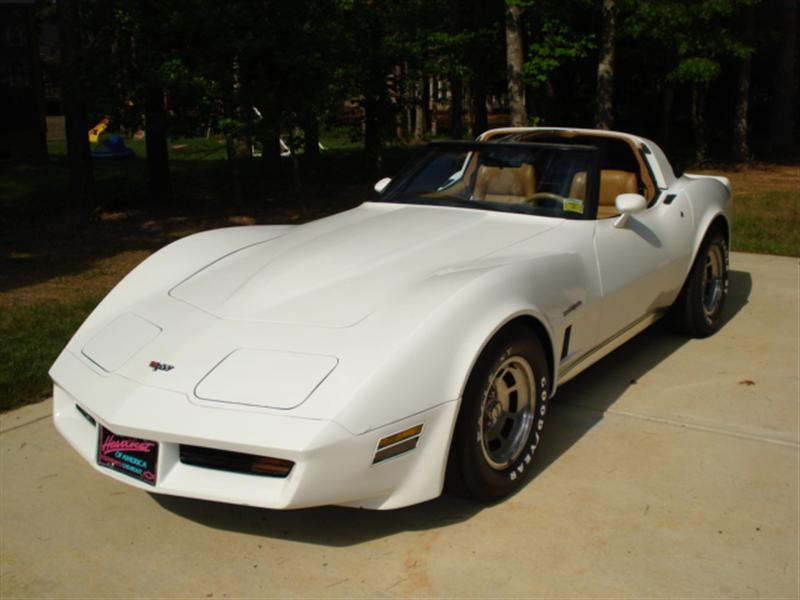
Fuel System Diagnosis
When the ignition key is turned to the "run" position, but before the "crank" position, the fuel pump gets power from the battery, runs for a few seconds, and then shuts off. If you can hear the pump run, you know that the ECU's (electronic control unit) control of the relay (as well as the relay) are functioning properly.
____________________________________________
____________________________________________
With the engine off but ignition key on, check for voltage at the fuel pump. It should read 12 volts. If it does not -- take an external 12-volt power source and apply power directly to the pump.
If the pump runs with direct power, check wiring and the fuel pump relay. If the fuel pump does not start with direct power, the pump is bad and needs to be replaced.
************************
Replace Gas Filter
The gas filter is located on the frame rail behind the front right tire. It is held on by a bolt and bracket. Before you loosen the hose clamps, pinch off the hose about a foot back to prevent gravity from emptying your gas tank!
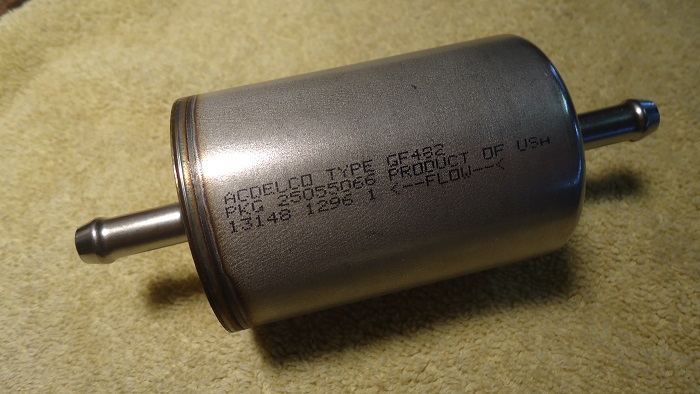
Pictured: AC Delco GF482 Fuel Filter
************************
Inspect and Replace Gas Lines and Hoses
Old fuel lines and hoses may cause restrictions due to kinks and/or dents, and old rubber lines may have collapsed inner portions. If the car has been sitting for years it would be wise to replace these anyway.
Fuel Pressure Test
To troubleshoot a Corvette Crossfire system further, you will need a fuel-pressure gauge. Although later-style EFI units have a Schraeder valve on a fuel rail to hook up the gauge, the Crossfire injection system does not.
To test the fuel pressure, find the inbound fuel line and add a "T" the line, so that you can hook up the gauge. On the Crossfire system, the gas enters the drivers-side throttle-body and then goes to the passenger-side throttle-body before being returned to the tank.
Crank the engine for several seconds. Fuel pressure should be between 9 and 15 psi. This pressure should hold for several minutes to an hour or more. If the pressure drops off quickly, either an injector is leaking, the fuel pump check valve is not working, or the fuel pressure regulator is at fault.
Any pressure reading below 9 to 15 psi should be followed up by removing the gas filter and rechecking. This will verify if a clogged filter is the culprit of the low reading.
You can purchase a fuel pressure adapter (OTC #7665) that takes the place of the inline fuel filter (for test purposes only). If the readings are still low, check for restricted passages, or an inoperative pressure regulator.
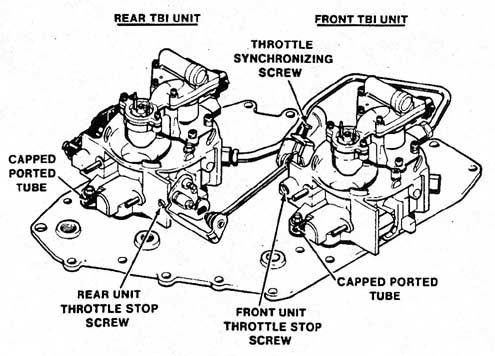
Fuel Pressure Regulator
The throttle-body unit on the passenger side contains a fuel pressure regulator.
The throttle-body unit on the driver's side contains a fuel pressure compensator.
They are both enclosed in their prospective throttle-bodies.
On the passenger side throttle-body, there is a rectangular hole in the casting between the injector and the rear part of the regulator casting. If you look in that hole carefully with a flashlight, you will see a little tab extending out with a spring holding it down. That is the moving part of the regulator.
____________________________________________
____________________________________________
With the engine running, try lifting up on the pressure regulator tab. You can insert a small flat-blade screwdriver into the hole and lift up on the tab and let it snap back down to re-seat the regulator. The engine will stall, since the fuel pressure will drop to zero when this is done, but it may clear out any debris stuck in the regulator (it will flush back to the gas tank through the return line). Once debris is cleared from the regulator, it should run at a consistent pressure rate.
If this test does not help, you may need to replace the pressure regulator/compensator.
Checking the Fuel Injectors
If the fuel pressure readings are satisfactory, the next step is to see if the injectors are opening. The easiest way to do this is put a stethoscope (or long screwdriver) on the injector, and have someone crank the car while you listen for a slight "click click". The light clicking sound is the injector opening and closing.
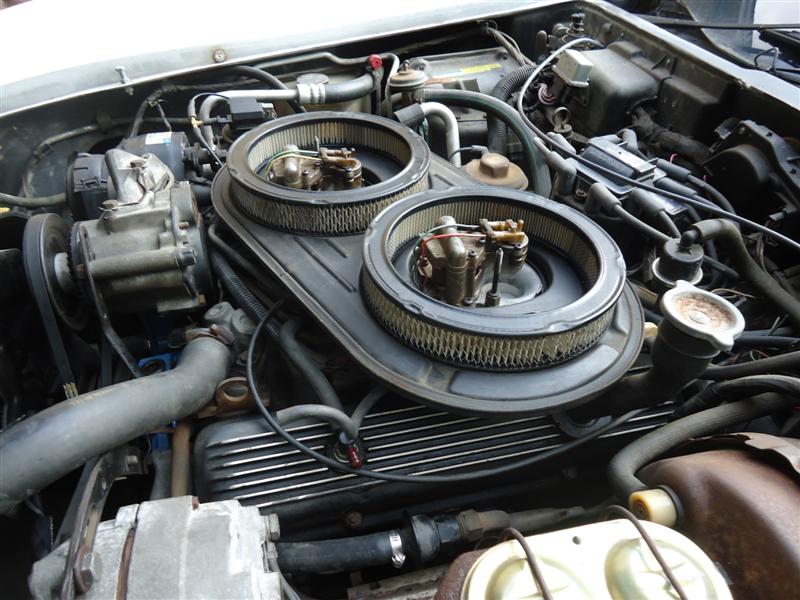
If the injector continues to supply fuel even after the wires have been removed, it needs to be replaced. When changing injectors, be sure to install ones that have the same resistance as the originals.
There is a small filter for the fuel injector nozzle, located under the fuel tube assembly. Inspect and clean this filter.
____________________________________________
____________________________________________
Front and Rear Injectors
The front and rear injectors have different part numbers, but it looks like one can just be reversed to use as the other. Correct injector pressure is 11 psi.
Rebuilding Crossfire Throttle-Bodies
If the car has sat for several years, it may be worthwhile to disassemble, clean, and reassemble the throttle bodies. You'll want to install new gaskets when reassembling. Rebuild kits are still available.
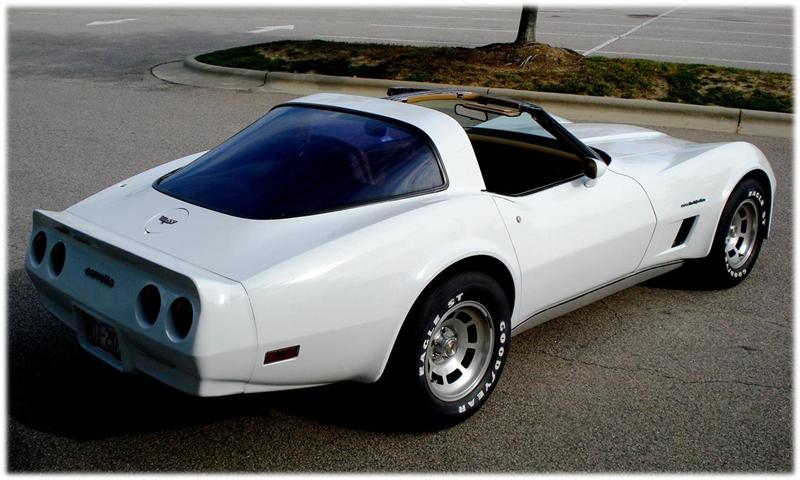
Corvette Car Touch Up Paint Tips:
Touch Up Paint Tips | Car Touch Up Paint
Related Articles: